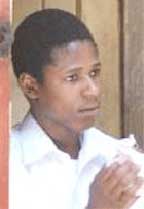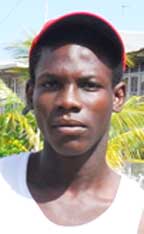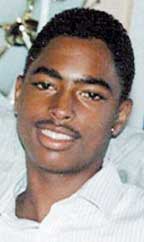Police killings down significantly- five so far this year
Almost two weeks ago, ranks of a police mobile patrol shot and killed a criminal suspect following the robbery of a money changer and a brief exchange.
And even as this article was being written, police killed another notorious bandit, Randy Morris.
There was a time when such incidents would have sparked condemnation of the highest order, with many claims of extra judicial killing by the police, even without proper knowledge of the circumstances.
No so today; in fact the killing of Odel Chase and Morris was greeted to a large extent with relief by members of the public.
Not that he was notorious, but there is the feeling that the public is fed up with criminals, both seasoned and petty that such actions by the police are not frowned upon as they used to be a few years ago.
Statistics will show that police killings have been drastically reduced over the years despite the rise in serious crimes for the same period.
From the unprecedented highs of the late 1990s and early 2000s, the figures of the past two years have been single digits.
Recorded fatal shootings by the police show numbers for 1980-85 and 1995-2001 to be equally high at 15 persons per annum, with the intervening decade experiencing considerably lower figures at an average of six deaths annually.
A total of 105 deaths by shootings were recorded in the period 1995-2001.
How many persons may have subsequently died from their wounds, following shootings by the police, is unknown.
According to a Guyana Human Rights Association report the vast majority of all shootings recorded were justified by the police on the grounds of: “wanted by the Police”,’ “escaped from custody”, “resisting arrest”.
“Self defence” was often invoked in reference to attacks with a cutlass, even in the most unlikely circumstances.
The GHRA said, “It is interesting to note that the first half of the PNC administration 1980-1985 had an average of 13 per year, while in the second half, under the Hoyte administration (’86-92), the average fell to slightly over five per year. A similar disparity occurred during the PPP administration.
Between 1992-97 (March), the Cheddi Jagan Presidency, numbers continued relatively low (nine per year), but under his successors rose sharply to close to 15 deaths per year. 1997 saw an all-time high of 28 deaths at the hands of the police.”
Then there was the period between 2002-2007, when Guyana experienced an unprecedented crime wave that sparked a series of killings that actually put the police on the back foot.
There response was an offensive that almost put them in trouble with the Guyanese population-for although they had to find a way to combat brazen criminals that ruled the streets, their overzealousness led to some ugly situations.
One such incident was the fatal shooting of University of Guyana student Yohance Douglas, which mobilized thousands in protests against extra-judicial killings, forced unprecedented action from the police and led to calls for independent international intervention.
By that time, despite the rampant criminality and fear that had gripped Guyana, the public cared less about the excuses and explanations given by the police for any fatal shooting.
This forced the police to adopt a concerted approach to repair its battered image.
Their efforts have so far borne fruit with the fatal shootings by the police showing a significant decline within the past three years.
Figures show that there are so far for this year five police fatal shootings, the same as last year and the year before.
These figures are far lower than those of 2009 when there were 14 police killings and 2008 when 17 persons were killed by the police.
In those days we had to deal with armed gangs. There were frequent engagements and confrontations, which naturally resulted in killings,” Crime Chief Seelall Persaud told this newspaper.
Of course those were the days when every criminal had a gun in his hand and there was a significant increase in gun crimes.
“The situations that existed then necessitated some amount of force which in most cases resulted in deaths both for law enforcement and criminals,” the Crime Chief explained.
Since those worrying days, with all the criticisms leveled at them, the police force has changed its posture to a much more humane one.
Even hardened criminals who were initially inclined not to surrender out of fear that they would have been executed nevertheless, have been turning themselves in.
The case of Tyrone Rowe called ‘Cobra’ comes readily to mind.
While there have been police shootings, most of the victims have lived to have their day in court.
“We now have drilled into the ranks the standard operating procedures of when to fire. We have gone so far as to distribute copies of this rule to all stations throughout the country. We also publish it in the force order, which is circulated weekly,” Police Public Relations officer Ivelaw Whittaker said.
“Before armed ranks go out, their officer reads to them the firing act,” Whittaker added.
But although the killings are down there is still one aspect of the picture that still needs urgent addressing- the question of inquest.
Former President Bharrat Jagdeo had called for the re-introduction of inquests as the most effective procedure for addressing police shootings.
“I think that more often we should go back to the Coroner’s Inquest so that in the future (it) hopefully will deal with all of these calls that we have for an enquiry”.
The Minister of Home Affairs commented to the media that for “reasons best known to themselves”, magistrates are reluctant to conduct inquests on cases of victims shot by the police.
He informed reporters that he had requested of the previous Chancellor of the Judiciary that a magistrate be assigned exclusively to this task, but was still awaiting a response.



